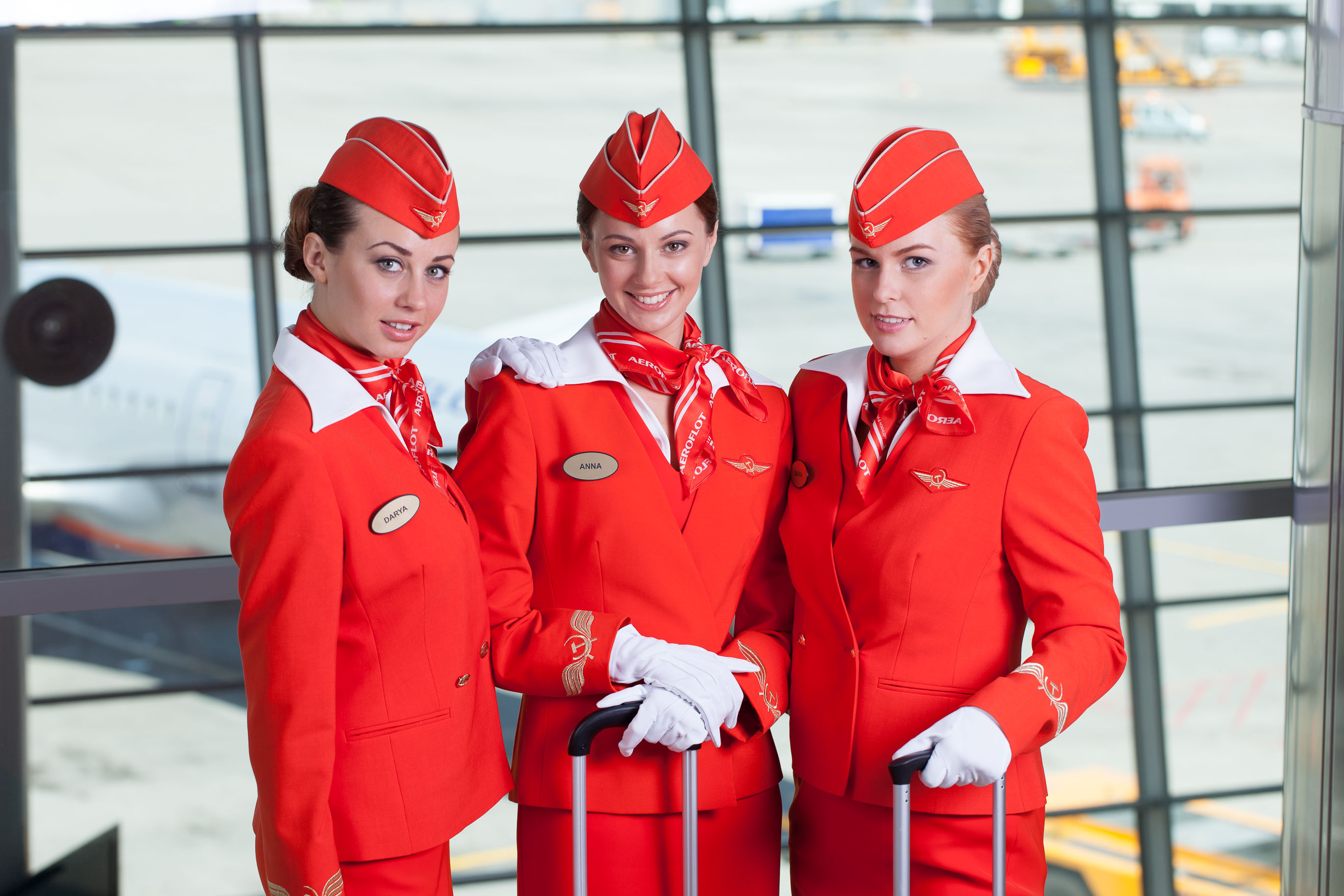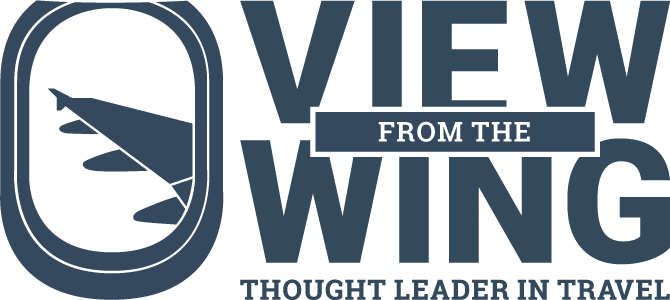A flight attendant was photographed sleeping in the jump seat, and they didn’t wake up “even 10 minutes after landing.” The person taking the picture frames this as a testament to the grueling job that cabin crew have to do, “serving hundreds of passengers, flying irregular hours, and managing constant demands like bells ringing every 5 minutes for water or food.” And he blurred their face to protect their job.
This isn’t a U.S. airline, although it’s something that happens on U.S. carriers, too. The cabin in the photo has generic-looking slimline seats (grey shells with dark‑blue piping) and no airline branding visible in the photo. But the green EXIT placard above the door is a giveaway that this is a foreign carrier (since U.S. cabin exit signs must be red letters on white).
Maybe this is end‑of‑trip fatigue. The flight attendant might have worked back‑to‑back turns. But it’s still not fine – dozing on the jumpseat after landing but before door disarm/cross‑check or before the seatbelt sign is off isn’t just against rules, it’s considered a safety‑critical window.
This flight attendant is still sleeping even 10 minutes after landing,Cabin crew work is tirelessly hard, involving serving hundreds of passengers, flying irregular hours, and managing constant demands like bells ringing every 5 minutes for water or food. With the physical… pic.twitter.com/10F6fWAq1G
— Fahad Naim (@Fahadnaimb) October 15, 2025
Reports of flight attendants falling asleep in the jumpseat happens at times. If the seatbelt sign was still on and doors still armed, as reportedly was the case here, then sleeping is considered a safety and compliance problem.
Exact policies will vary. From the photo, this wasn’t a U.S. airline, and I’m most familiar with FAA regulations (and to a lesser extent EASA ones).
- 14 CFR 121.391(d) requires flight attendants at their duty stations, belt and shoulder harness fastened during taxi and near floor level exits and uniformly distributed for effective evacuation during takeoff and landing.
- Common industry guidance is that cabin crew to run a mental emergency review while seated for takeoff and landing – this is when being alert matters.

Working multiple flight segments in a day, or crossing several time zones, can be grueling. That’s what rest rules are for – and where a flight attendant is exhausted anyway, airlines generally tell crew to call out for fatigue rather than risk being asleep in a critical phase of flight.
Since December 2022 U.S. airline flight attendants have had required minimum 10‑hour non‑reducible rest between duty periods of less than 14 hours (this was increased from 9 hours).
Sometimes flight attendants get stuck sleeping in the airport when the airline forgets to book them a room, and hotels sell out during major weather events. And sometimes leave sleeping passengers behind on planes. Neither is acceptable, but also it’s not permitted for a flight attendant to doze off during critical phases of flight.

I wrote about an American Airlines flight attendant who snitched on a trainee that this happened to. She was immediately fired. If you’re wondering why snitch? The trainee was a Hebrew language speaker (likely Jewish), and the flight attendant reporting her was Arab.


Neglect of duty and grounds for dismissal
I can remember two flights on the CRJ-200 operated by SkyWest for Delta when the sole flight attendant fell asleep during the flight. That was obviously an issue because a CRJ-200 only has one flight attendant. It probably happens more than we want to admit or acknowledge.
Under-paid and over-worked. The original poster, Fahad, who took the photo, seemed concerned for the wellbeing of the crew member, and unlike Gary, was not taking the opportunity to bash her as ‘lazy,’ then cite policies from other countries about airline safety. I donno, man. I wouldn’t punch-down here. Hope she gets some good rest and that folks here would be nice to FAs for a change.
It’s been a while since I’ve seen a red sign instead of green. This reddit post says that even aircraft in the US domestic market are allowed to use green signs with dispensation from the FAA. Apparently, both Airbus and Boeing use green. I wonder about Embraer and Bombardier.
https://www.reddit.com/r/delta/comments/1fyo6wx/is_this_a_typical_exit_sign_on_us_domestic/
@Mark — You forgot to include ‘burn the witch!’ If only we held you to the same standards that you set for others.
Dozing off in mid flight/ That I can see. But she apparently slept through landing and didn’t awake until 10 minutes later? That’s troubling. Most people jolt awake when the plane touches down and the landing announcement is made. I suspect those that have taken some kind of over the counter or prescribed medication would be the people that are still snoring away as passengers are standing up to deplane.
As far as the job. I think airlines make it pretty clear during recruitment what the job is and the drawbacks. The job is what the job is and it’s not for everybody.
Two points. Number one there are mandatory rest periods. When you work until 11PM to get a big presentation done there’s no legal requirement that you need eight hours rest before you show back up at work again. So, it’s not like the flight attendant got off duty at 11PM and was back on a 6AM flight.
Number two. US flight attendants of years gone by had greater in flight demands. They were required to do a full beverage and meal coach service on a 90 minute LGA to ORD flight, or comparable route. They had to hand out blankets and pillows to any flyer asking for them. I’m not sure some of the younger flight attendants today would have been able to hack a 1975 world.
@1990
Overworked? You are kidding right? I have had 4 hour plus flights where there is one pass through in the cabin. Come on 1990. I’m guessing she was having fun the night before.
Flight attendants are part of a crew and the team is managing the flight. Why focus on one individual.Did someone feel unsafe or just want to create a buzz by posting this nonsense?
The fact that the flight attendant didn’t wake up after landing make me concerned that they could have had a stroke or a heart attack.
@Coffee Please — “Burn. The. Witch.” Got it.
Not ideal, but given airline safety it was less dangerous than jaywalking at 4am in Centerville, Indiana.
@1990
Just the lazy ones.
@Coffee Please — Glad to see you back.
Fifteen amusing things passengers can say to wake up their sleeping flight attendant before landing:
1. “Wakey-wakey, eggs and bakey!”
2. “Are you sleeping or just hungover with a permanent buzz?”
3. “Rise and sparkle like a disco ball!”
4. “Good morning, sunshine! Time to unleash your inner ray of happiness!”
5. “Wake up and smell the coffee—or at least try to find the aircraft galley!”
6. “Open your eyes and embrace the chaos of the day!”
7. “It’s dawn o’clock! Rise and conquer the world!”
8. “Get up and rock ‘n’ roll your way to the bathroom!”
9. “Time to rise like a majestic unicorn and sprinkle some magic around!”
10. “The world needs your presence, so quit snoring and start roaring!”
11. “Wake up, sleepyhead! The early bird gets the worm (or leftover coffee grounds in the lavatory)!”
12. “Stretch those limbs and yawn like it’s your day off!”
13. “Rise and shine! It’s the day’s grand opening—starring you!”
14. “Can passengers disarm the exit door so we can open it and make our connection?”
15. “The snooze button is not your friend. Rise and conquer the snooze monster!”
Phone died
It’s a “a safety and compliance problem” by statute. In the real world, everyone on that flight got off safe and sound.
Too many instances of small violations of statutes, regulations and airline policies get assigned excess gravity when they are labeled a “safety issue” when no one comes even close to having their safety threatened in the real world.
Peeps gotta chill fr fr
Wouldn’t fire her outright — woul like to check if she was sick or had pulled a long hard flight. And worth noting in her file in case it happens other times. But wouldn’t see firing her non a first offense of this nature
I don’t know which carrier you are referring to, but I am familiar with F/A rest times in Canada, UK and USA. All F/As in these countries are required to be given 8 hours “prone” rest at layovers. That means prone, not incl. travel to/from the airport. Of course if the person in question elected not to take the 8 hours that is given, yes they may tire out on the aircraft, which is not conducive to on board safety, esp. at either the take off or landing phase. The carrier would take a very dim view of this with serious discipline.
The people who lean towards the “negligence” angle have either never learned or forgotten the phrase “walk a mile in my shoes”.
Americans love to judge, but hate to be judged.
It would be helpful to have context- was she sick, long hours, etc. I don’t condone “burning the witch” but what safety standards are OK to violate without consequences? Could be a slippery slope.
Exit signs in the US do not need to be red and white. I’m wondering if AI is writing all these articles because there’s always so much misinformation. Exit signs on 787s are the internationally accepted green and white signs.
@Ken A — I’m partial to 1. “Wakey-wakey, eggs and bakey!” Okie, dokie, artichokie?
“Exhaustion Or Negligence?”….. Nope, just extremely hungover, poor lady.
@Wanderer
One correction: United’s 787’s do have red text exit signs for some reason. (All other 787 operators, including American, have the green symbol you mentioned.)
Are you kidding me? This is the easiest job ever. So tired after making a couple drinks? Give me a break. You’d never make it in the world with a real grown up job.